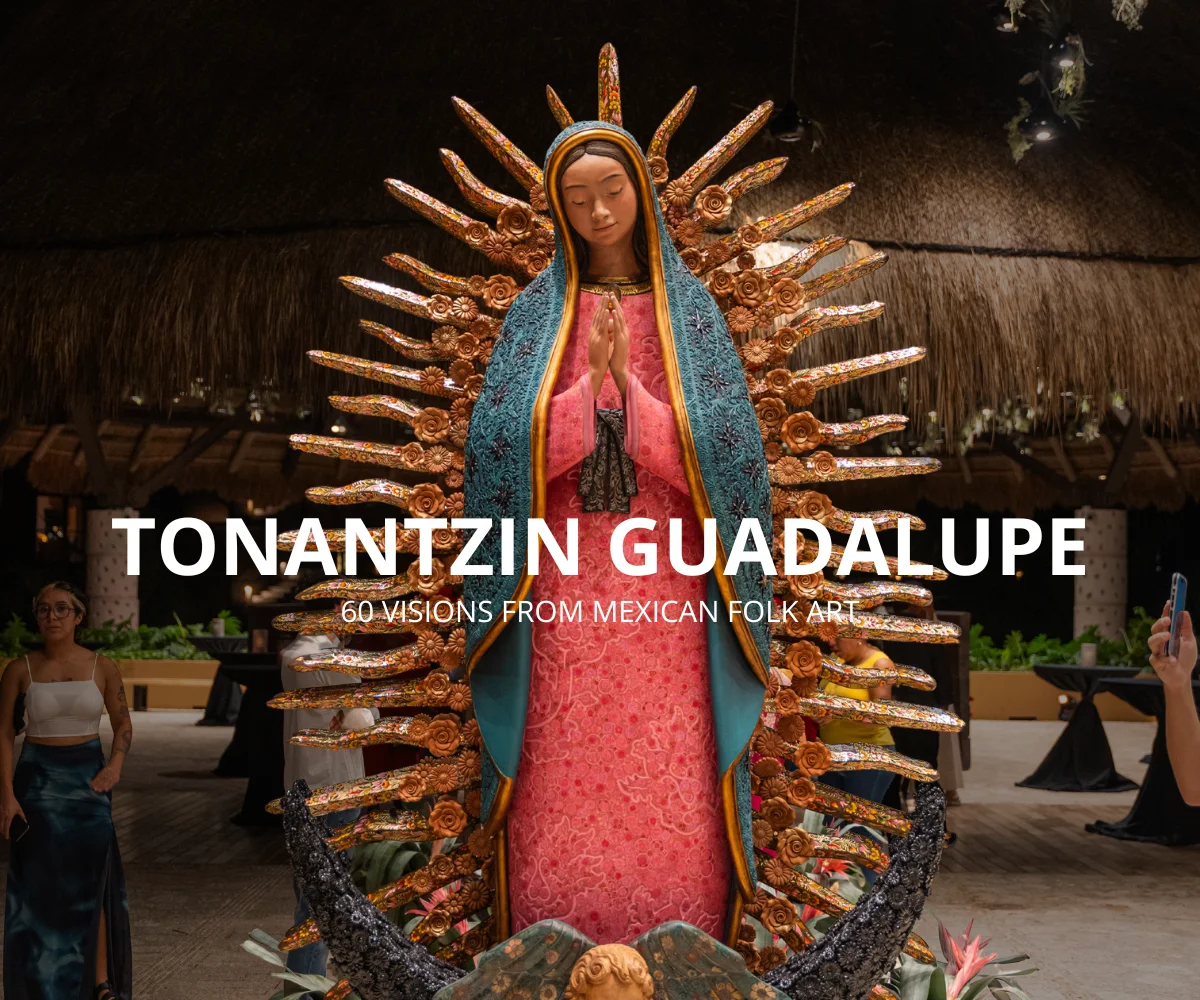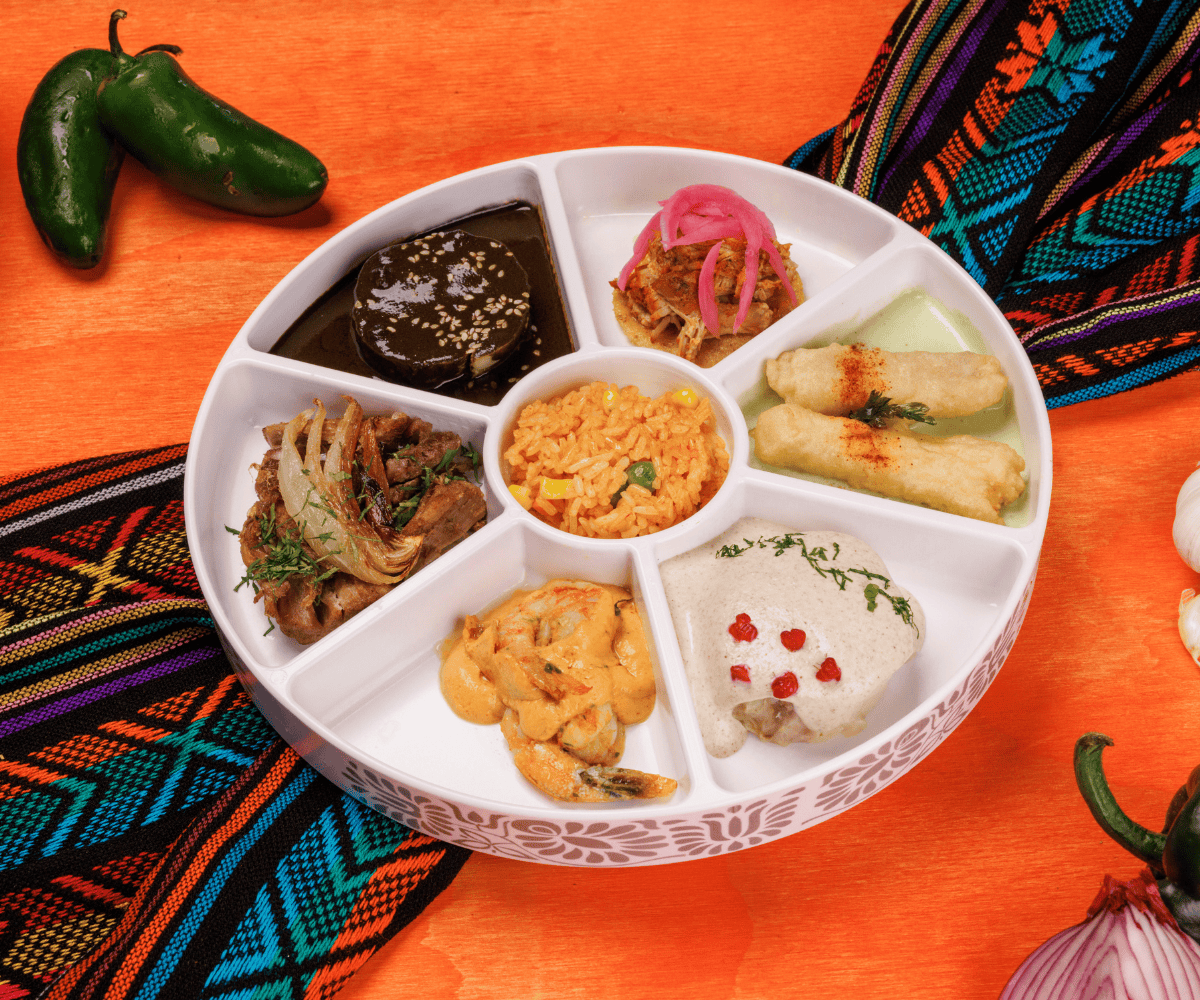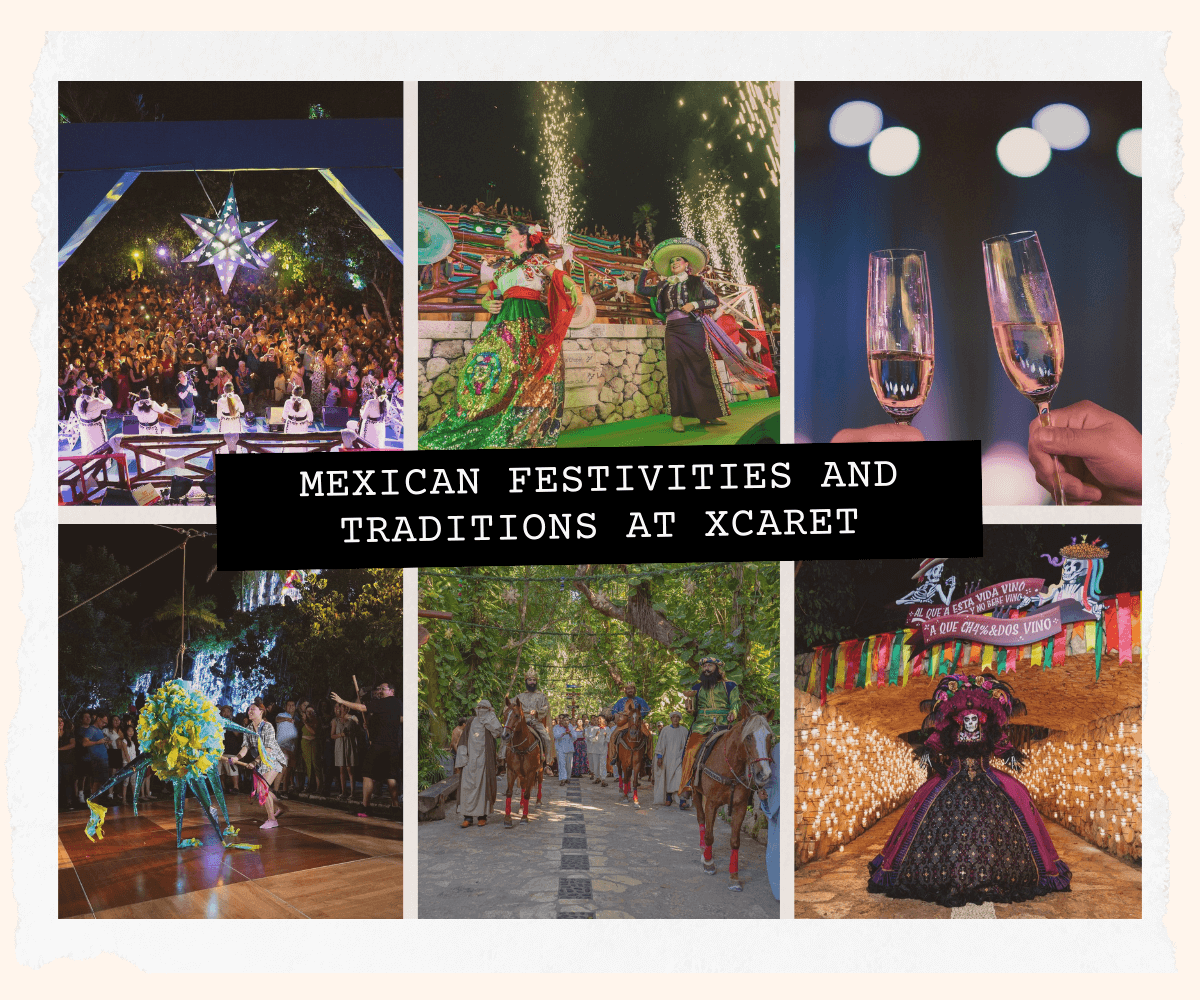The Charrería: a Mexican tradition that we pass on to the world
July 29, 2020
Mexico’s national sport
Mexico is famous for having some of the most incredible traditions in the world. Today, we’ll be talking about the charrería, a tradition that has been present throughout the history of Mexico. To us, it brings great pride and it’s considered Intangible Heritage of Humanity. The image of the classic Mexican charro is known throughout world, and we are sure that it will continue its legacy for many years to come.
Read more: Typical Mexican Candies to Brighten The Heart.

Origins
Mexico’s first contact with horses dates back to colonial times with the arrival of the Spanish people. The use of horses was prohibited for indigenous and creoles until 1619 when Viceroy Luis de Tovar Godínez decreed a permit so that 20 indigenous people from a hacienda located in Pachuca could ride them freely.
One of the forerunners of the charrería was Sebastián de Aparicio, who dedicated his entire life to livestock and agriculture on his Puebla estate. The charrería as we know has its origin in the states of Hidalgo and Jalisco, and as an equestrian school, it has its origins in the plains of Apan, Hidalgo.
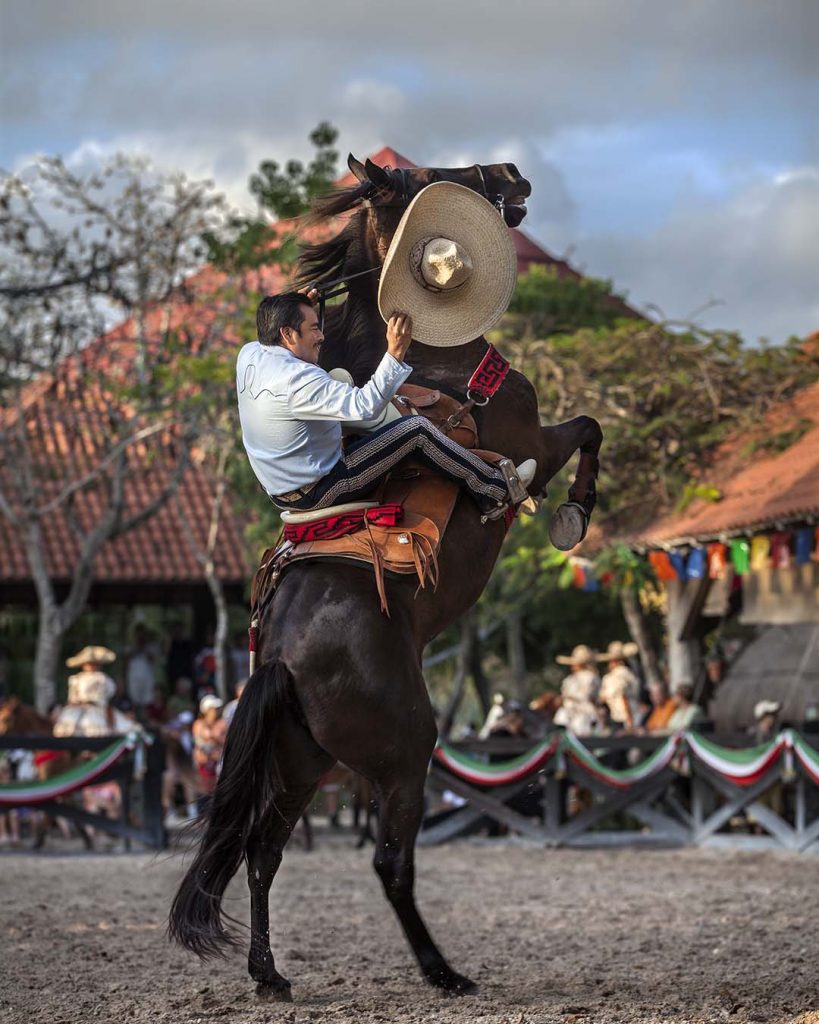
The term “Mexico’s national sport' was born just after the Mexican Revolution, when landowners began to migrate to places like Mexico City and Guadalajara. They started organizing associations that gradually spread throughout the country, giving charrería a well-organized structure.
During the 19th century, there were many prosperous haciendas in the country, most of which were livestock keepers who used hundreds of permanent laborers on their land. It was them who we can thank for establishing the beginning of the charros and the charrería.
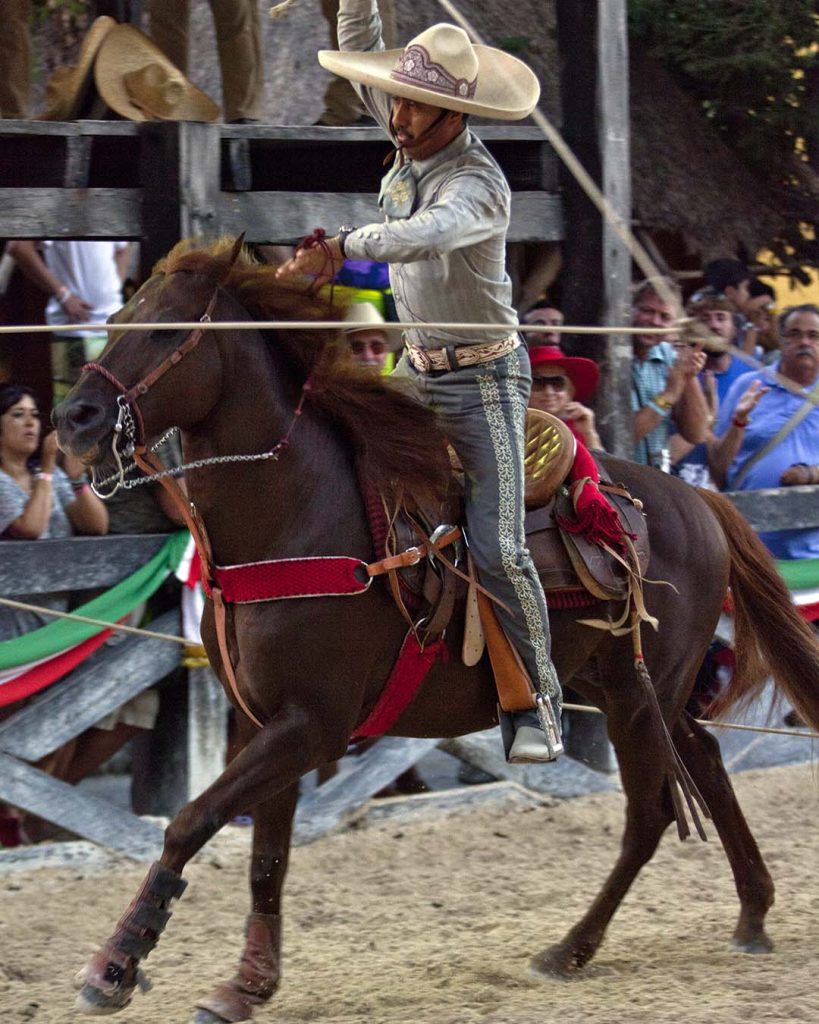
Tricks in the charrería
Like all Mexican traditions, charrería is a show that bases its popularity on the tricks that the charro performs on top of the horse during the famous celebrations known as the charreadas. Currently, there are nine tricks in the charrería considered to be part of competitions:
- Cala de caballo: The demonstration of the good rein and education of the horse.
- Manganas a pie: A charro located four meters from the perimeter fence laces the forequarters of the equine to knock it down.
- Piales en el lienzo: Stopping a mare by lacing her hindquarters until she stops completely.
- Coleadero: A charro mounted on his horse will wait for the exit of a bull. He will take it from the tail to tie it on the leg and knock him down.
- Terna en el ruedo o jineteo de toro: A charro riding a bull until the bull stops.
- Paso de la muerte o jineteo de yegua: Riding a wild mare with the aim of remaining mounted on the horse until she stops.
- Escaramuza: Choreographed horse exhibition with music on the background and a female rider.
If you ever attend a charreada in Mexico, perhaps you will be able to hear the famous Mexican song “Marcha de Zacatecas” that begins the parade of the charreria teams, who will later participate in the competition.

Typical costumes of the charrería
Just like in other traditions of Mexico, the charrería also has typical costumes, which are used depending on the importance of the event or the occasion in which they are worn.
The origin of these costumes dates back to Spain, to be exact, to Salamanca where its typical costume was also known as “charro'.
The task suits
This suit is the most common in charrería competitions and consists of a classic palm hat, a collarless shirt, an unadorned cloth or suede jacket, pants without a back bag and leather ankle boots. The colors usually used are different shades of brown or gray, and a discreet butterfly bow tie for a touch of class and elegance.
The gala suit
If the competition requires it, the charros can also use this costume for the charreadas, which is even more elaborate than the previous one due to the materials they use to make it. Sometimes the main details can be made of silver.
This suit consists of a felt hat, roll neck shirt, elegant tie matching the suit, suede, or cashmere jacket with three belt loops on each sleeve and luxurious brooch on the chest and the pants with silver buttons on each side. Belt with decorations according to the colors and materials of the whole set.

The deluxe gala suit
If you ever have the opportunity to see a charro wearing this costume, we are sure you will be surprised. Without a doubt, this is part of our Mexican identity.
The colors of this suit are crucial, they are generally gray, dark blue, or black, with a striped hat and silver buttoning from the waist to the ankle. It requires discreet but detailed ornaments and a gun with embroidered holster. Turn-down collar shirt and jacket of the same material. Discreet tie with fine embroidery, preferably silver, matching the button and the hat.
Charrería is one of the treasures that we have in Mexico. It’s part of our identity as a country. Its importance is so great that in 2016 it was declared an Intangible Heritage of Humanity by UNESCO.
We hope this blog has helped you discover a little of the history and details behind this Mexican tradition you can enjoy at Xcaret Park.
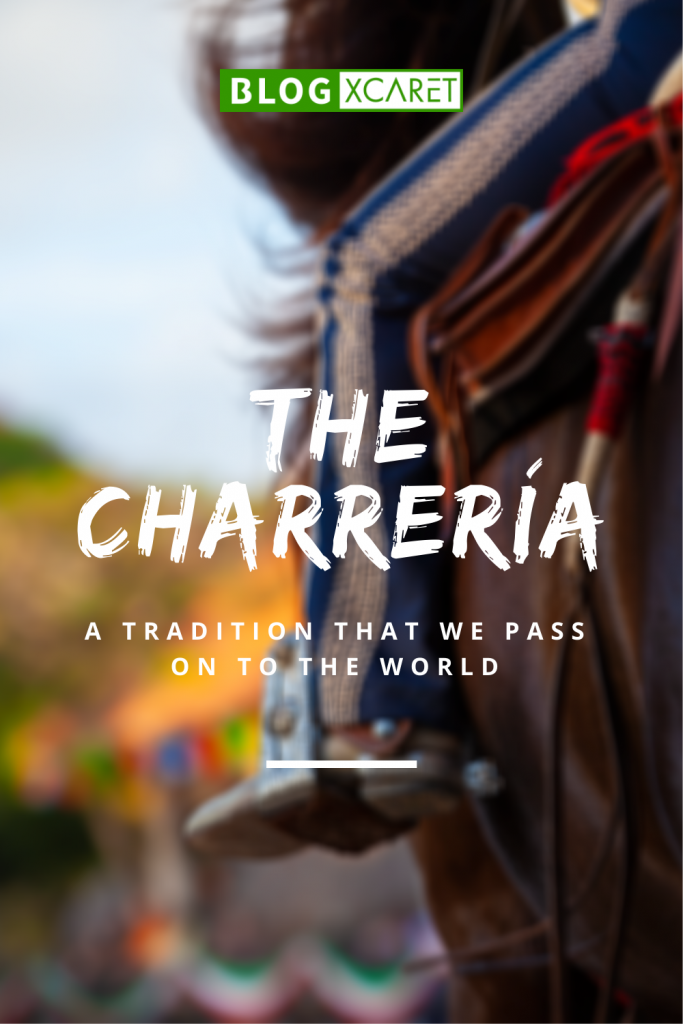
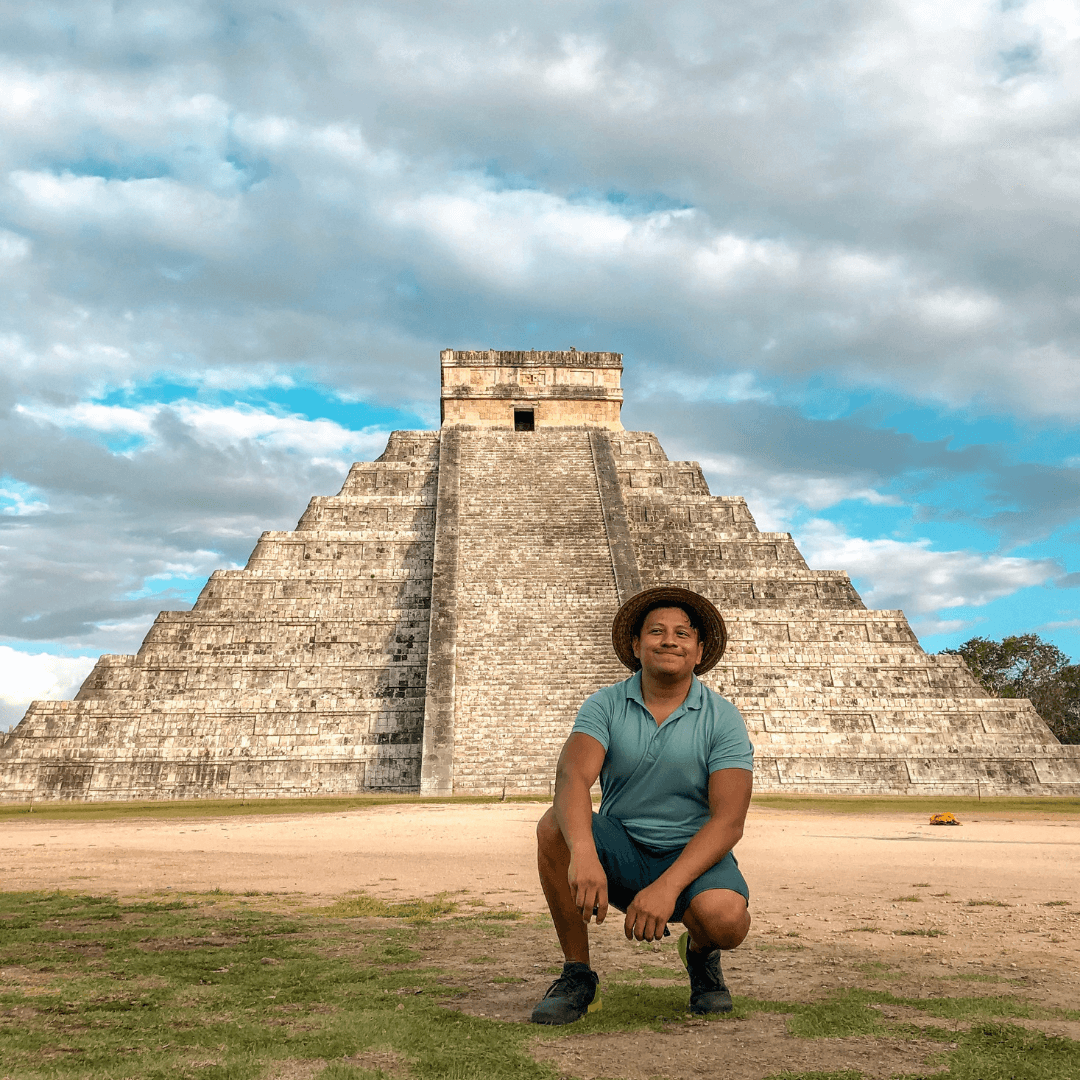
Apasionado por lo no establecido, viajo y colecciono historia para compartir con quien quiera escuch...
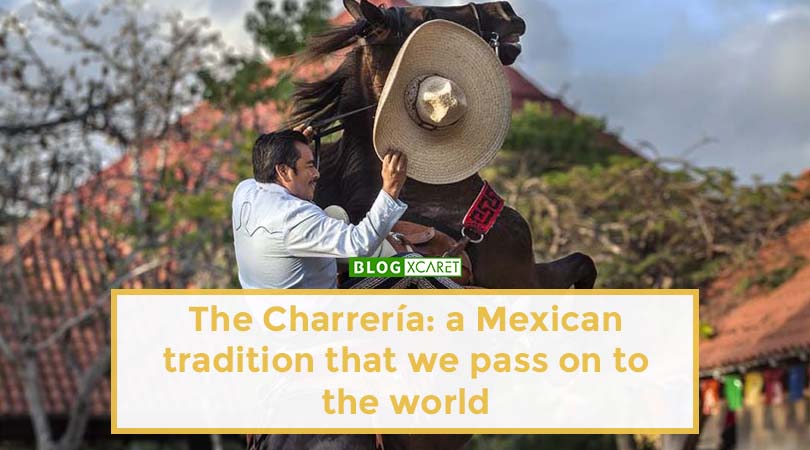
Posts Relacionados
Grupo Xcaret
Hotels
